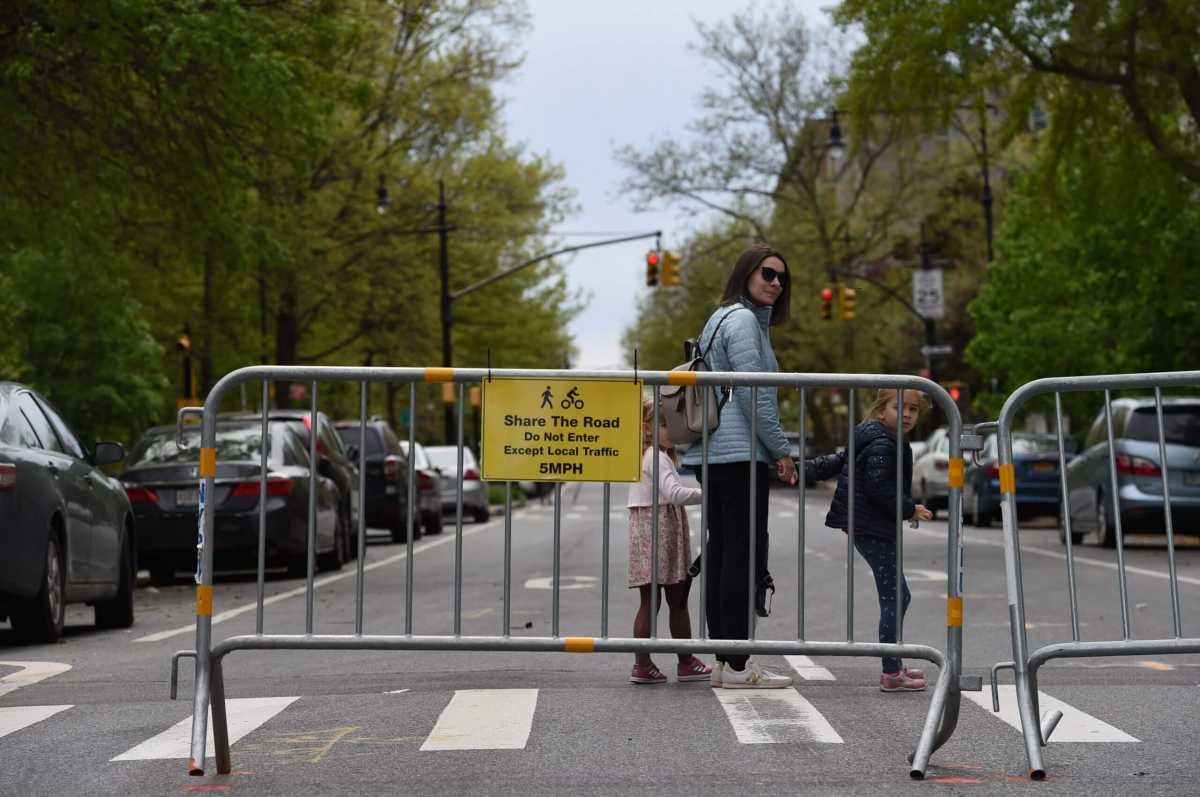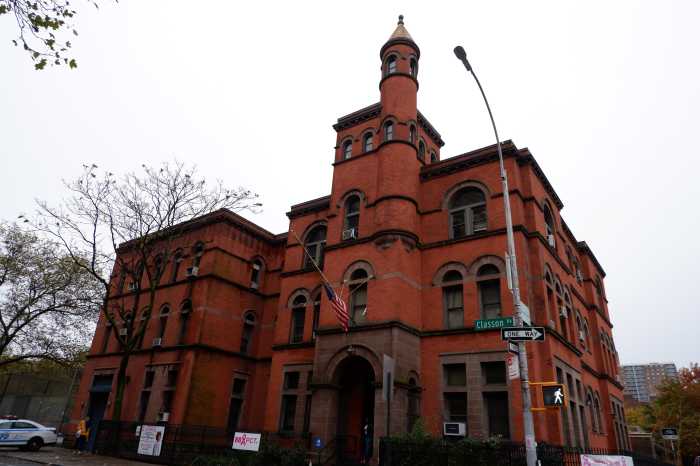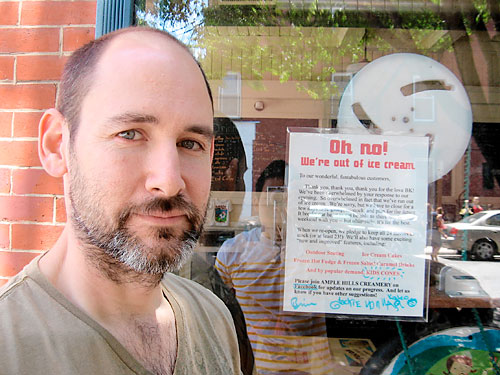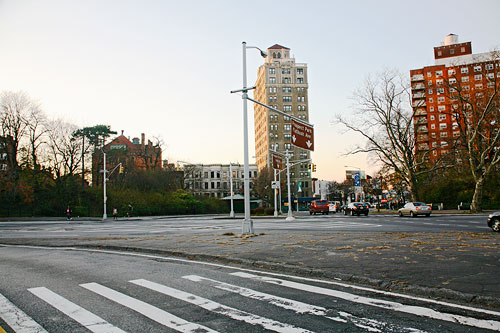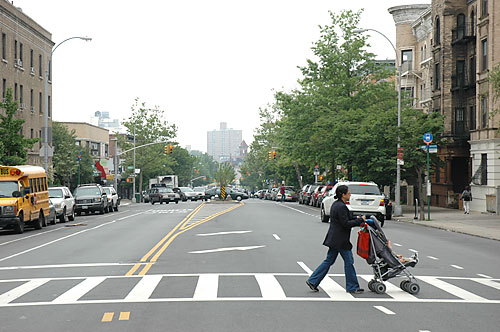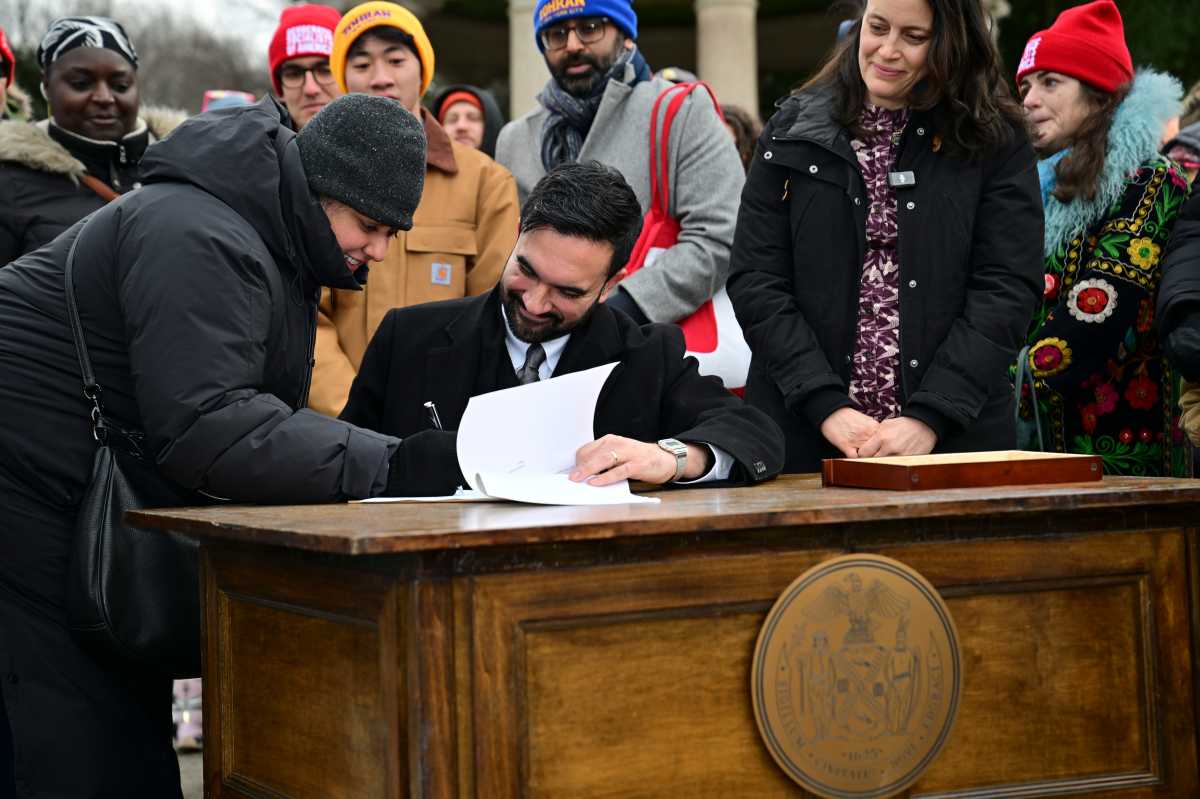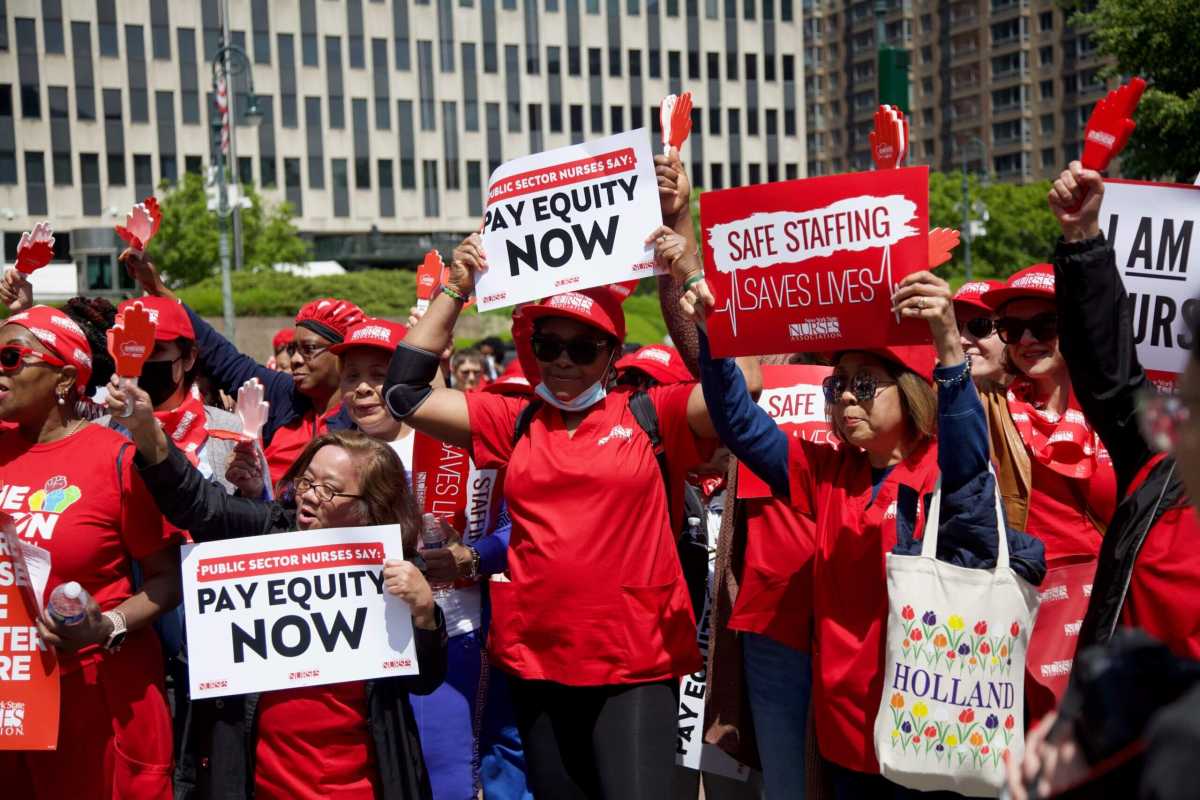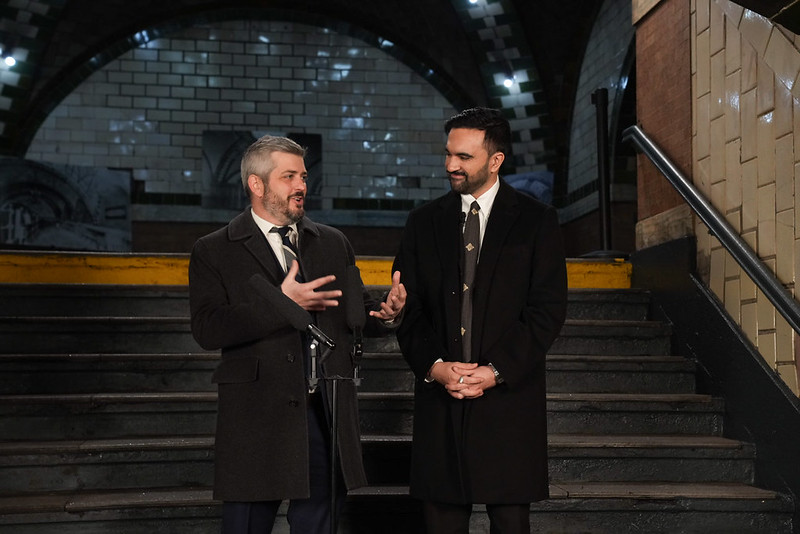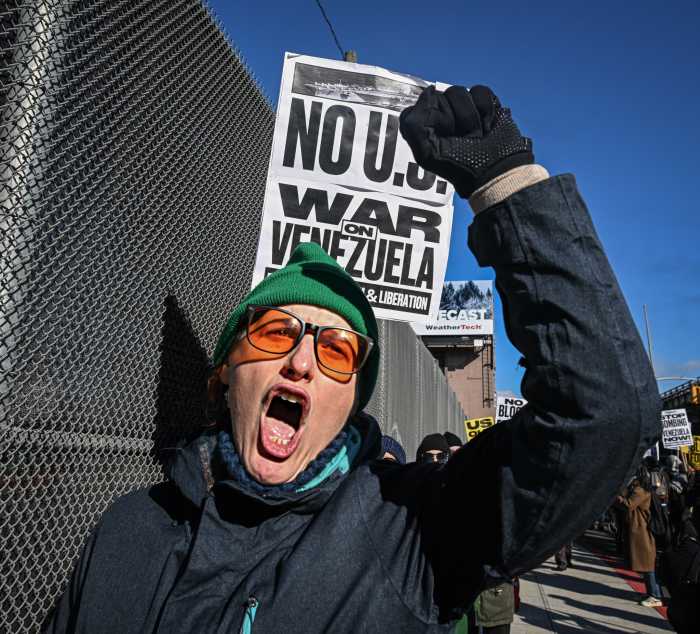Carey Tan was working her volunteer shift maintaining the pedestrianized “Open Street” along Underhill Avenue in Prospect Heights when an outraged man confronted her — claiming the program was a product of gentrification, before hurling homophobic slurs at the civic-minded local.
Outrageous as that encounter seemed, it was not uncommon.
The Open Streets program, which started shortly after the COVID-19 pandemic began, and prevents cars from driving on certain streets during the day, has become a topic of affinity and ire among New Yorkers, with transit advocates hailing the reallocation of roadway, and motorists ferociously beamoning the added hassle to their car-based commutes.
Just days into the program’s spring season, Tan says she’s experienced multiple verbal attacks like the anti-gentrification, pro-homophobia man’s onslaught of words. On her very next volunteering shift, a man, yelling out of his car window, accused her of being a “liberal totalitarian dictator” and an “evil person.”
During her most recent shift, Tan discovered a man moving the open street’s barriers onto the sidewalk, and when she confronted him, the scofflaw began picking up the barriers and tossing them around while screaming profanities.
None of this perplexes Tan, who’s long been aware of the vitriolic sentiments hurled back-and-forth between motorists and advocates for alternative transportation options.
But mostly, Tan blames the city for the slapdash way the Open Streets program has been managed.
“None of this really surprises me,” she said. “It’s kind of indicative of the haphazard way this whole program was rolled out.”
Rather than some tangible presence on behalf of the city — from the Department of Transportation, the NYPD, or some other agency — locals have been left to manage their open streets by themselves, often forming neighborhood groups to patrol the pedestrianized roadways and keep the anti-car barriers in place.
Tan’s confrontations were just one of the several incidents of open streets being vandalized, or their volunteers being harassed in recent weeks. In one case, a man driving an Amazon van — which the e-commerce giant later claimed was a counterfeit vehicle — stole a Greenpoint street’s barriers. In another case, two city officials were so intensely berated during a meeting of Open Streets opponents that they withdrew from the meeting.
On a beautiful spring day, when our streets could be filled w/ peace, we are suspending Driggs / Russell #openstreets because of theft – every single barrier. This is after weeks of vandalism & harassment. The @NYC_DOT is working w/ their agency partners to address the situation. pic.twitter.com/GKBJucu40t
— North Brooklyn Open Streets (@nbkopenstreets) April 13, 2021
The Department of Transportation said on Twitter it would investigate the stolen barriers and get the program up and running again.
“Removing Open Streets barricades is dangerous & illegal,” the agency tweeted. “Open Streets are an important part of the city’s recovery. We are working with NYPD & our partners to investigate and stop this type of unacceptable action. We intend to get all affected Open Streets safely operational again.”
Opponents of the program have even taken to collecting petitions to show their dismay, claiming they are “being silenced and forced into having our streets taken away from us.” One online petition, which has garnered close to 1,000 signatures, lists trash build-up, noise, congestion and the removal of parking spaces in a “commuter-friendly neighborhood” among their concerns.
Largely, however, New Yorkers are supportive of the Open Streets mission, according to one survey, which found that 63 percent of voters are in favor of expanding the program in their neighborhood, including 57 percent of people who own cars.
“While the majority of our city’s streets are devoted to moving and parking vehicles, the majority of New Yorkers want streets that prioritize people.” said Danny Harris, the head of the activist group Transportation Alternatives in a statement about the poll.
Tan, however, said the community groups running the programs need more support to keep the popular idea going, especially when dealing with aggravated motorists.
“What we really need to do is really dedicate city resources and time,” said Tan. “It should not be left up to community volunteers.”
Gib Veconi, chair of the Prospect Heights Neighborhood Development Council, which operates the open streets in Prospect Heights, including the hugely popular Vanderbilt Avenue, says the key to finding success with the program will be a question of design, and better coordination with city agencies.
“Ultimately we have to design this in a way that is less reliant on armies of volunteers,” he said. “The city has to take a larger role.”
Veconi stressed that the streets as they currently exist — with light barriers that can easily be moved — are a transitional state, and that moving forward streets will have to be closed off with more efficient infrastructure.
“We need to find some purpose-built barriers or equipment that can be deployed very quickly, that when they’re not deployed to close the street or detracted, don’t require as much effort to get them out,” he said. “The key to success is good design.”
The city’s involvement is essential to a more equitable open streets program, Veconi said, to ensure the program reaches all kinds of neighborhoods.
“We have to solve the design problem and figure out how we could get to a program that could be resourced by the city in a way that it’s accessible to potentially any neighborhood in New York City that wants to implement it,” he said. “What you see today is a lot of the most prominent open street locations are in neighborhoods that either have a [Business Improvement District] or have a very strong community organization that can pull together volunteers to make it happen, and that’s great, but not every neighborhood has that.”
A full list of open streets can be found here, along with applications to add additional roadways to the program.


